New Mac Pro
What the Mac Pro offers is power and external expandability and it will come as welcome news for certain high end video editors.
Check out the advert, as it might be the closest you get to one of these specialist machine:
.
iPad mini with retina display now available
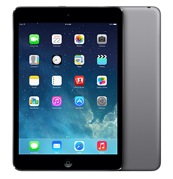
Here is Apple’s pricing chart, showing the retina models in two types: WiFi only and WiFi plus Cellular data:
WiFi only models:

WiFi and Cellular Data models:

Note that all iPad minis with cellular requires a nano-SIM card.
If you are looking for a cheaper model and are willing to forego the retina screen, you can save about €100. The 16GB non-retina mini (WiFi only) costs €299. A WiFi and cellular model is €419. There are only these two variants for the non-retina display model.
Expect the retina display model to sell out fast- it is getting close to December and we are likely to see shortages as we approach the Christmas buying season.
.
New iMacs: faster speeds, similar price
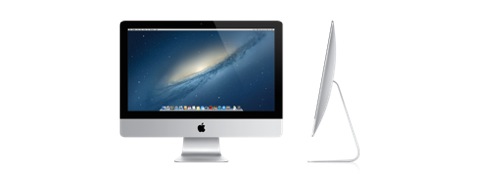
All models come with a generous 8GB of RAM memory and a 1TB hard disk. All iMacs can be customised, with the option to add a Fusion drive, which is part hard disk and part flash storage. This makes the iMac much faster as it automatically frequently used tiles on the faster flash drive. Replacing the 1TB hard drive with a 1TB Fusion drive costs an extra €200 or £160. Doubling the RAM to 16GB also costs €200 (£160).
The ports on the back of the iMac remain the same: SDXC card slot, four USB 3 ports (compatible with USB 2), two Thunderbolt ports, a Mini DisplayPort and an Ethernet port.
Overall this update is relatively minor, but if you have been waiting to purchase a new Mac desktop you will get more speed for your money.
To see the full details, check out the online stores at Apple Ireland or Apple UK.
Just to note- there is also a VESA Mountable version of the iMac available at this link..
iPhone 5s and iPhone 5c- What You Need to Know...
So what is the point of two iPhone models?
Apple believes that the two models serve two groups of consumers. The new iPhone 5s is more cutting-edge and comes with some extra features. The iPhone 5c is more colourful and very similar to the iPhone 5 (which it has replaced).
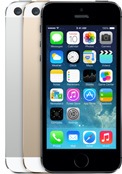
iPhone 5s
What is new about the iPhone 5s?
The phone has three internal hardware changes. The first is speed: the 5s comes with the new A7 processor inside and this promises to have double the speed of the phone it replaces (iPhone 5). It also has a new sensor inside (M7 motion coprocessor) which means the phone will act a bit like a Nike Fuelband, or any of the exercise gadgets which track your walking/running. The third, and most noted change, is the “Touch ID” fingerprint sensor on the front. The home button now recognises your finger and this takes over as the method to wake the iPhone, replacing the need to type in a 4-digit passcode. It also works when you buy apps, music, videos, books etc. You place your finger on the sensor instead of having to type your iTunes password.
The other big news is the improved camera. The new model lets you take “bursts” of images so you can capture events with lots of movement. It also allows for high-quality video, which can be slowed down into what Apple call “slo-mo” mode, without losing the quality and definition.
The iPhone 5s comes in thee colours- gold, silver and “space grey”. It also comes in three storage sizes- 16, 32 or 64GB.
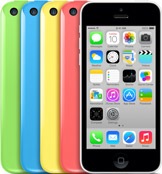
iPhone 5c
Is there anything new about the iPhone 5c compared to the iPhone 5?
The main new features are the better battery life and the new colours. The iPhone 5c comes in green, blue, red, yellow or white. The price has dropped by about $100 compared to the iPhone 5 and it is likely that this model will be the big seller due to subsidies from the carriers.
All of the other specs are the same as the iPhone 5- A6 processor, 8 megapixel camera, 4 inch retina display . It comes in two storage sizes- 16 or 32GB.
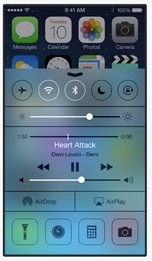
iOS 7 Control Centre
What about the iPhone 4S:
It is still around! It will be the cheapest model and will probably come free with a contract from your carrier.
What about software?
One of the announcements yesterday was about iOS 7, which is going to be released next Wednesday, Sept 18th. This all be a free download and can be installed on any iPhone 4 or later, iPad 2 or later and on an iPod touch 5. It will also come as the operating system on the new iPhones. One of the big features to come in iOS 7 is FaceTime audio. You will be able to call any other iOS 7 user anywhere in the world for free, using your WiFi or data package.
The biggest change for iOS 7 will be the look and feel. It is bright, colourful and is a very new design compared to your current iOS 6.
Apple also announced that it was going to start bundling a lot more software with the new iPhones. All new models can download Pages, Numbers, Keynote, iPhoto and iMovie for free. Up to now each of these were separate purchases from the App Store.
What about pricing?
The new prices were announced, but they are US-only for the moment. International prices will emerge as Apple start to roll-out the handsets later this month.
Here are the US prices for the iPhones with a 2 year contract:
iPhone 5s:
16GB $199
32GB $299
64GB $399
iPhone 5c:
16GB $99
32GB $199
iPhone 4S:
8GB Free
UK prices for the unlocked model:
iPhone 5s:
16GB £549
32GB £629
64GB £709
iPhone 5c:
16GB £469
32GB £549
iPhone 4S:
8GB £349
What about those cases?
Apple also spent a bit of time highlighting the new cases for the iPhone 5s and iPhone 5c. There are six colours for the iPhone 5s, all made from leather, including a (RED) edition:
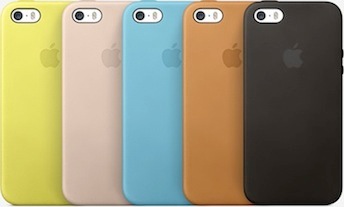
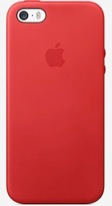
For the iPhone 5c, there are six rubber cases with a new open design at the back:
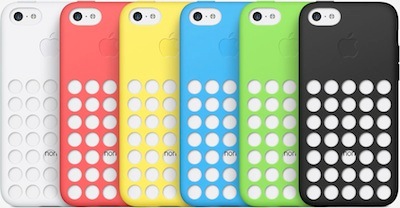
When will the new iPhones be available:
Customers in the US and UK can pre-order an iPhone 5c from Friday 13th September. Then both the iPhone 5s and 5c go on sale from Friday 20th September. Note that you can’t pre-order the iPhone 5s, probably due to limited availability at the start.
Anything else I should know?
The “s” in iPhone 5s and the “c” in iPhone 5c are both lowercase. Just saying.
.
Expect a busy Sept-Oct from Apple
First, we expect there to be two events between now and Christmas. Although Apple have not officially announced any event yet, it is almost certain that a Sept 10th event will see the unveiling of the new iPhone(s). We also expect the new iOS 7 to ship with the new phones, something which Apple have so far only said will happen in “Fall” 2013.
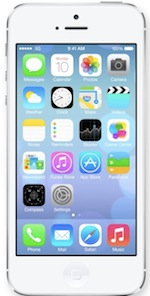
In terms of hardware, this leaves the iPads, iPods and some Macs, all of which we expect to be updated before Christmas. Our view is that Sept 10th will see two new iPhones (5S and 5C?), plus the launch of iOS 7. This seems to be plenty for a 60-90 min keynote. Then at the later event in October, we will see the annual refresh of the iPods and possibly iPads, ready for the busy Christmas season.
OS X Mavericks may not require any press event. This was previewed in June at WWDC, and so its launch date may just be mentioned at a keynote, or it will be a press release.
As for the Macs, we expect to see refreshed iMacs and MacBook Pros before the end of the year, but these two can happen without any event. There is also the question of the Mac Pro, something Apple have been making noise about ever since Phil Schiller’s sneak preview at WWDC. It could be that they will launch the Mac Pro at one of the events, simply because it makes a statement about Apple design and deserves more than a press release. Apple seem to be taking their step back into pro desktop seriously and so will want to show off this machine at a media event.
Lastly, the Apple TV. Don’t bet any money on this. It is likely that there will continue to be an iterative change to this existing product, but we don’t expect any major new hardware just yet. Unlike with mp3 players or PCs, Apple need to focus firstly on content and lastly on hardware. It is a matter of getting the content providers into place and then we have no doubt that Apple have a new hardware product to match this offering. But for now Eddie Cues torturous job of dragging all networks and content producers to the table continues..
Guide: How to setup an encrypted USB stick
1/ open Disk Utility (Macintosh HD -> Applications -> Utilities)
2/ insert your USB stick and select it on the left hand side of the Disk Utility window. Be careful to select the USB stick and not some other disk such as your backup drive!
3/ with the USB disk selected, click on the “erase” option on the right and set the options as shown here:
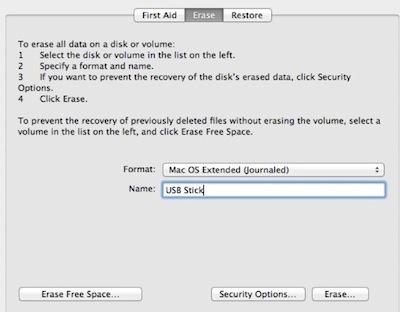
Choose “Mac OS Extended Journaled” and type in a name for your stick.
4/ now click on the “erase” button at the bottom to completely erase the stick.
5/ quit out of Disk Utility.
6/ find the USB stick on your desktop- hold the ctrl key down on the keyboard and click once on the USB stick icon
7/ choose “encrypt xyz” from the pop-up menu to start the process.
8/ you will be asked to enter your encryption password and a hint:

Be careful when doing this because if you forget this password you will not be able to access this drive!
9/ once you have entered the password twice and entered your hint, click on the “encrypt disk” button. This could take a long time. There is also no progress bar telling you how long it will take. Let this process complete and don’t interrupt it.
10/ once completed, eject the disk reconnect it again. You will then be challenged for the password before you can see the disk on the desktop. Enter the password and now copy your material onto the disk.
This will protect your USB drive should you lose it. Encryption means that it is virtually impossible for anyone to crack the password and see your files. It will just give peace of mind for sensitive information. .
New OS: OS X Mavericks
Apple previewed OS X Mavericks, the next operating system for your Mac.
[Having run out of big cat names such as Lion, Panther, Cheetah, they have now started to name their Mac operating systems after Californian locations].
OS X Mavericks will arrive this autumn, around the same time as iOS 7, and will cost approx. €10-15 (price not yet confirmed).
Here is a quick summary of some of the changes and new features which Apple announced:
1/ Calendar:
Hate the leather trim in the current OS X Calendar app? You are in luck! The new version of Calendar has a cleaner more simplified look:
Current calendar trim under Mountain Lion:

New look under OS X Mavericks:

Calendar will also integrate maps, so it will give you an estimated travel time to your appointment plus a map of where the event is to be held.
Read More...
.
New iOS: iOS 7 for the iPhone, iPod touch and iPad
iOS 7 will be the new operating system for iPhones and iPads and is probably the biggest change since the first iPhone in 2007.
Here is a quick rundown with some snapshots of how it will look:
Home screen
The new iOS 7 has a cleaner look, with lots of clear clean lines and a less cluttered feel. Here I an example of the new home screen on an iPhone under iOS 7:
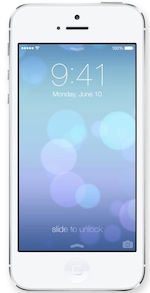

You can see above that the new look is crisp and clear.
Read More...
.
Tip: Dropbox Guide
To share a folder with another Dropbox user:
1/ open your Dropbox folder on your Mac
2/ ctrl-click on the folder inside your Dropbox
3/ choose “Share this Folder” from the pop-up menu:

4/ you will be redirected to a web page with these details:


Enter the recipients email address and a note, and you can tick or un-tick the option to let the other person invite people to share this folder (probably best to leave this un-ticked so you control who gets invited).
5/ click "Share Folder" and you are done- they will get an email asking if they want to share. When they click on that link and accept, you will get a email telling you they have joined in.
To share a single file with a non-Dropbox user:
1/ ctrl-click on the file you wish to share inside your Dropbox
2/ choose “Share Dropbox Link” from the pop-up menu:
3/ the link is now copied to your clipboard (the memory of the Mac)
4/ now paste the link into your email or other document. You can also test it by pasting it into a Safari window and pressing return- this will sow you what your recipient will see when they use the link.
Note: when the other person receives the link they should click on the “download” or “direct download” button. They do not need to sign up for or sign into a Dropbox account to use this service.
To check that your Dropbox software is updated:
1/ hover over the Dropbox menu extra at the top of the screen- the yellow box will flash up telling you you version number- check this against the latest download from Dropbox: www.dropbox.com/install
:


2/ if you need to update, download it from the webpage
3/ now install the software. Don't just download- you need to open the downloaded file when it is ready and go through the steps to install.
4/ once finished you can check your version by hovering ver the dropbox menu extra at the top of the screen- the yellow box will flash up telling you if you are up to date.
.
Imagining the iWatch
So what will we see in the iWatch. What features make sense to people who know Apple and what do we know about how they design their products?
1/ iWatch- it will be thin. Apple would not produce a clumpy design which would feel intrusive. It would need to be very light and thin on the wrist. Jonathan Ive would now allow a clump-on-your-hand out of the design studio, so expect thin, light and unobtrusive.
2/ Lightening- it needs to have a lightening connector on the side for recharging (and possibly for syncing) and this is likely to be one of only two connections. Apple’s transition to the Lightening to USB cable in 2012 makes it possible to produce thinner devices.
3/ Bluetooth and WiFi- these have to be in there as the iWatch will need to connect to the internet to access services such as email and web. Bluetooth could be the way to go for headphones. Imagine Apple producing a set of small bluetooth headphones to pair with for music, radio, and Siri input? This is what Apple show in their information for the iPod nano, showing us how the iWatch could connect to headphones, speakers, car stereos etc.
4/ SIM card- now this is more tricky. Even a nano-SIM, the smallest version of the SIM card, would take up a lot of space in a small, thin iWatch. Would Apple be a able to give up the space for this in the watch? It is more likely that they would opt for some type of embedded SIM, which is integrated inside the body of the device. This would do away with the need for cards and opening trays, but would be difficult to implement due to mobile carrier requirements. Would Vodafone and O2 allow Apple to do this? Expect an iWatch with an embedded-SIM card to start on one or two US networks (AT&T and Verizon?) and for it to be rolled out later across other international carriers over 6 months.
5/ Apps- oh yes, they have to be in there. However we expect a new type of app to be produced. iWatch apps would not be iPhone or iPad apps as a new category would be required to work with the smaller screen. Expect a different category too with more of a focus on information based apps rather than content creation. Watch out Nike+ Wristband; the iWatch will do what you do right now, but far, far better.
6/ Voice recognition and Siri- this has to be key, given the lack of a keyboard or input device. The watch would have one button to active speech, so there will be many people on the bus chatting to their watch on the way to work! “What time is my first appointment” spoken into the watch and the result played into the bluetooth headset or displayed on the screen. “Compose new email” followed by dictating your message into your new message window.
7/ NFC- now is the time. Apple were criticised for not adding NFC into the iPhone 5 but launching it on the iWatch is far more sensible. Imagine Passbook or your iTunes account being included in the iWatch. When you go to pay in an Apple retail store you could swipe your wrist and watch over a receiver and you account is debited. It is unnatural to do this by fumbling in your pocket to pull out your iPhone. But with the watch on your wrist it makes complete intuitive sense. It temporarily turns your watch into a digital wristband at a sports game or concert, giving you access as your electronic ticket at turnstiles.
8/ given that the developer community needs time to prepare their apps, expect an announcement similar to the launch of the iPad and iPhone. These both happened at the start of the year (2007 and 2010) with the launch of the product later that year (June), allowing the developer community time to work on their apps and submit them to the App Store. If an iWatch is to launch in 2014, it is likely that a similar schedule will be use. But if it did happen this year, the iWatch would need to be announced this June at WWDC. We would not place money on this!
Conclusion: Try Googling Apple iWatch- those clumpy boxes on a strap are way off, and I believe almost none has given a sensible impression to what Apple might produce. This device needs to be light and natural on the wrist to persuade people who don’t wear watches (us included) to begin to carry a device on their arm.
Remember what Tim Cook said at D11 this week: “We release products when they are ready. We believe very much in the element of surprise. We think customers love surprises. I have no plan on changing that.” We expect that the iWatch will be part of this philosophy so don’t expect any beta products being announced. Apple will go to the market when they are ready, this year or next year, and will only venture into this new field if they are sure they can bring a new and unique slant to wearable technology.
Dr. Simon Spence / 2013.
Shipped versus Sold
Click here to view the IDC chart.
The number stated can only be estimates as companies such as Microsoft and Amazon do not reveal the number of tablets sold. Furthermore, it seems that IDG quote figures for numbers of tablets shipped and not the real number of tablets sold. Only Apple give the number of iPads it sells for each quarter. It is hard to tell what percentage of these tablet shipments on the IDG chart are left unsold or are returned to the supplier. In December, Blackberry wrote off $485 million in PlayBook inventory, bringing the cost to the company of its tablet adventures to $1.5 billion.
There are three figures to look out for (if a company gives hints to their real numbers): the number of tablets manufactured, the number shipped and most importantly, the number sold. Many companies seem to give indications about the numbers shipped but fewer are revealing the numbers actually sold and in the hands of consumers..
What next for Apple?
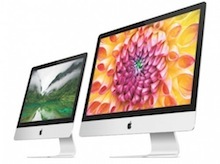
On the negative side, profits were down to $9.5 billion compared to $11.6 billion in Q2 2012. That’s quite a big drop, especially when you look at revenue increasing in the quarter. But what seems to be at play here is the success of the iPad mini. Apple say that the mini makes up the majority of all iPad sales and its margin is far lower than the larger iPad. Apple at present seem to be ok about letting their margins dip while share grows. Apple dominates the “tablet” (iPad) market and they have done this by adding the new mini to grab the smaller device market before a competitor can undermine their position. If we look back, the same happened in the iPod market in the 00s when Apple added the iPod mini, followed by the iPod nano. The smaller form appealed to consumers and it became the biggest selling model.
Good news
The good news is the iPad figure. The continuing dominance of the iPad means that Apple’s is still the default tablet. As home customers and increasingly corporate buyers move away from PCs, the iPad is becoming the device of choice. This combined with the figures for iCloud, where Apple now have 300m accounts, means that iOS is a unique environment. iTunes accounted for $2.4 billion in revenue this quarter from sales of music, apps, films and books etc.

The Mac too is holding its own, especially in turbulent times. Overall PC sales are down about 14% (according to IDC), so Apple’s relatively flat sales are a good result for the quarter. This is especially true when you consider that the iMac was not in full supply until well into the quarter, with supply problems since its December release.
Bad news
The problem for Apple may lie in what comes next. Cook mentioned that new products were coming in the autumn and this may signal a quiet quarter on the hardware front. Apple’s attention seems to now be on WWDC and software announcements, with iOS 7 and OS X 10.9 expected to be key parts of the June event.
iPhone sales will fall away in Q3 just as they always have in the past, in anticipation of the next model being announced. Customers have become very savvy at this and most people will tell you that buying an iPhone in the summer is a bad idea (unless you are being offered a good deal for the soon-to-be-replaced handset).
iPad sales will also be mixed. Speculation about the next model may drive sales down and yet the start of the education buying season, with students returning to school and university, may help balance the figures. However we still expect this to be the lowest quarter of the year for iPad and iPhone, Apple’s two strongest product categories.
Exceptions
Cook referred to new product announcements in the Autumn but there is still the possibility of a new Mac Pro being announced at WWDC. This is the logical place for such a statement. Apple has shied away from hardware at WWDC in recent years, but the Mac Pro is an inexcusable gap in the Apple Mac lineup.
There may also be some refreshing of processors in the laptop lines, possibly to boost the education season. This could wait until the Autumn, but that way all categories may be refreshed in one go, something that Apple may avoid in an attempt to spread out the good news. It’s is also worth noting that any refresh of Macs always happen after any back to education sales offers. This may mean any changes come late in the quarter.
Outlook
Overall we expect Q3 to be about strategy- the next version of iOS and OS X setting the pace for the year. Apple have already indicated that revenue will be between $33.5 and $35.5 billion with a gross margin of 36-37%, lower than in Q2. In Q3 of last year sales were at $35 billion and so ben Apple expect a flat year over year set of results.
However this does all lead us to Q4 and more importantly Q1 2014, where new products come on stream. Q1 is Apple’s Christmas quarter and is always a blow-out set of results and we see no reason why this will not continue. Indeed Cook referred to a new product segment in the conference call and that means one thing- a new leg on the Apple table. Apart from a revised iPhone and iPad, and updated Macs and iPods, it looks certain that they will enter a new market before the end of the calendar year. If investors are looking for signs of growth for the end of 2013 and into 2014, Cook presented them with a perfect hint to what’s next for Apple..
New Products for 2013
- Apple normally refresh the iPad range at this time of the year, with the iPad 4 being the one exception
- the MacBook Air line was refreshed in June 2012 and so may be ready for a change
- the education buying season starts in early summer and Apple traditionally updates Macs aimed at this market
However...
- the iPods will not be refreshed until the Autumn
- Apple have recently caught up with iMac demand and so a refresh is unlikely until late 2013
- the Mac Pro is crying out for an update, although we would bet this will happen at the WWDC conference this summer
- the iPhone will be updated in the usual timeframe, between June-Sept.
“Ron Johnson is the Steve Jobs of the retail industry…"
The company’s board said on Monday that Mr. Johnson, who engineered Apple’s retail strategy, is leaving Penney and that Myron E. Ullman III, who had been C.E.O. at the retailer for seven years until Mr. Johnson took over, has returned to the helm.
With Ron Johnson out of J. C. Penney, surely it is almost too easy to see him rejoining Apple, back to a position he held until 2011? Apple are currently without a retail chief after they parted company with John Browett.
Just to note- this was the way J. C. Penny saw Johnson in June 2011: “Ron Johnson is the Steve Jobs of the retail industry”. How things change..
Tip: Using GrandPerspective to Spring Clean Your Mac
GrandPerspective is a free app which scans your HD (or home folder) and gives you a visual overview of the size of the files on your drive. After downloading the .dmg file (from this link), open it and drag the GrandPerspective app to the Applications folder. Then open it from Applications and when it opens, choose “Scan Folder” from the File menu and select your “Home” folder (the one with the house icon in the sidebar!).
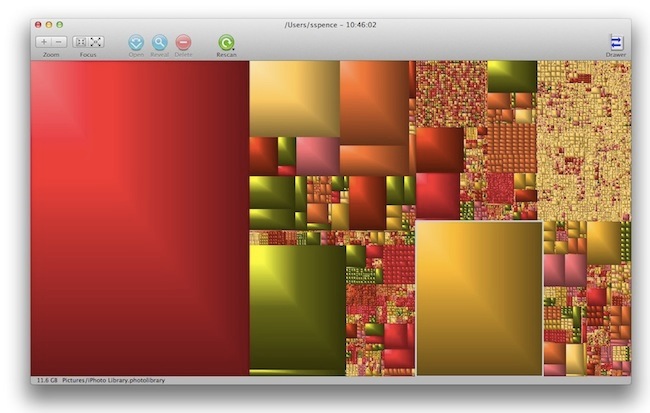
GrandPerspective will scan and then return a visual map of all of the files in your home folder. The large blocks are the memory hogs, the small ones are best left alone. It is likely that your iPhoto library will be one of the large pieces as it contains all of the photos and videos in your iPhoto app.
If you hover the pointer over the large blocks, it will give the location at the bottom of the window. This will help you to look for this file afterwards and possibly delete the file if it is no longer needed.
Remember that once you spring-clean your files, you need to empty the Trash can. Open the Trash and use the “Empty Trash” button in the top right of the window.
Tip: Remove Adobe Reader As Your Internet PDF Viewer


If you install Reader it will add some internet plugins for your Safari web browser. This means that when you click to view a PDF on a website, the document opens in the Adobe environment and not using Apple’s built-in Preview app.

We like the Preview toolbar which appears over a PDF in Safari (above)- we particularly like the button which allows us to open that PDF in the Preview app.
To get rid of the Adobe system and return to using Preview as your default PDF viewer, you need to follow these steps:
1/ open your Mac HD -> Library -> Internet Plugins
2/ move the Adobe plugins to the Trash:
3/ quit and reopen Safari
It is a simple step but not that obvious. There is no option in the Safari extensions preferences to turn off Adobe Reader. However this simple clean-out should do the trick.
.
If there is one thing you do this week...
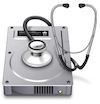
Take a look in your Applications folder for Utilities, and then inside here you will find Disk Utility. Open it up, select your Mac HD on the left and then click on the “verify disk” button. Wait a few minutes for a result. All going well, you should receive a message telling you that the Mac HD appears to be ok. If you get a bad result, such as that the drive needs to be repaired, backup immediately- no excuses and no delays. With your information secured you can then look at repairing the drive using OS X Recovery.
You should run this every month to ensure you do not lose data. No point in thinking about this stuff after the event….
Next iteration of the iPhone: reality vs fantasy
If we look back at the history of the iPhone we see that it has always followed a pattern- a changed phone form followed by a iterative update. This was the new iPhone 3G followed by the updated 3GS, the newly shaped iPhone 4 followed by the refined iPhone 4S. Therefore all signals point to the iPhone 5, introduced last autumn, being followed by a new iPhone 5S this summer/autumn. The iPhone 5 was a new lighter version, with a larger screen faster chip and support for the new LTE/4G networks. The expectations for this autumn should be an updated version of this design, with a faster chip inside, better camera and new version of iOS.
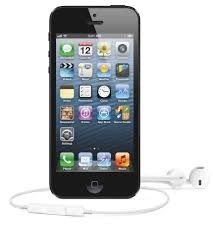
The problem is that this does not stop the fanciful comments about the need for a brand new iPhone 6 now, breaking the well trodden path which Apple has set out over the last six years. The argument is that Apple has lost ground against Android and so needs a new form-factor, a new style of phone, along with a new cheap iPhone for a lower price point. But this has no basis in fact- the iPhone 5 was the top selling smartphone worldwide at the end of 2012 (12.6%), and the older iPhone 4S was in second place(8%), with the Phone 4 (first released in 2010) still in the top 5.
It is likely that Apple will continue to strengthen its position with the next iPhone, but the view that they need to release a brand new shape, or a “revolutionary” new phone, flies in the face of the stats. .
Backup, backup, backup!
Probably the best device to use in terms of simplicity is Time Capsule. Time Capsule works as your wireless network (or connects to an existing wireless network) and backs up your Mac hourly, when you are connected to your wifi. it costs around 300 euro for a 2TB model.
The second option is an external hard drive. We tend to go for the Western Digital My Passport drive, normally the 1TB model. It is cheap, compact, and connects to the Mac with USB. We don’t think that you need a high speed device as it is not really an issue with backups- if it takes 10 mins or 15 mins does it really matter? Backups work in the background so you won’t even notice when it is working away.

In terms of setup for a USB drive, it is simple- connect the USB drive and you will be prompted to use it as a Time Machine backup (assuming you are not already using another backup device). Choose to go ahead, and you may be asked if you wish to format the drive for your Mac (if it is a new drive). Proceed and the Time Machine backup will begin. It could take a long time for the first backup, depending on the amount of material on your Mac.
Setting up a Time Capsule device is a little more complex, but you are guided through the steps when you install the device using Airport Utility, Apple’s software for configuring their wifi devices.
Either way, make sure you have a good backup to hand. Otherwise it’s not a matter of whether you will lose information- it’s when!.
OS X Tip: Keyboard Shortcuts
We always recommend to clients that they try to adopt a number of shortcuts as they can save lots of time.

Here are the links for the two PDFs:
- Keyboard shortcuts Part 1
- Keyboard shortcuts Part 2.
It's About Innovation and Increments, Not Market Demands
For example, one analyst is quoted as saying “to re-accelerate growth, Apple likely needs to launch new products…” [link]. However this is simply untrue. In the past, Apple has steadily grown through incremental changes, launching a product and then following up with year on year changes to refine and improve this product segment. The major innovation, which breaks up an existing market and redefine its direction, is the exception and not the standard. The iPod, the iPad and iPhone all came years apart and after the initial launch, Apple would improve this with changes and innovation by adapting the improving its product to stay ahead of the competition.

The iPod is a classic example of this. The original iPod was introduced in 2001 and did not receive huge acclaim at the start. Instead its popularity grew as Apple modified the design, with incremental changes and the parallel changes to iTunes. Each year in recent times there have been new iPods, not redefining the industry, but keeping the iPod ahead of all competitors. Even today the iPod dominates the digital music market.
The same pattern has been adopted for the iPhone and iPad, with yearly updates, improving and adding features with each new model. So why do so many analysts demand completely new products from Apple, as if this was the general driver for the company’s growth? For a company which launched two game changing products in the last six years (iPhone and iPad) why does anyone expect Apple to launch a new product frequently?
This is partly due to simple laziness. We believe that many of these analysts don’t understand Apple’s history and only know the headlines. They believe that the iPod, Mac, iPhone and iPad came from an innovation production-line and therefore there must be another new gadget ready in the automatic pipeline. Talk of a new Apple TV set shows this- an ill-conceived idea that Apple should enter this mature market. This makes no sense, as the margins in the this market are low and Apple are far more likely to enter a market which it sees as where we are heading rather than a market that has already existed for years.
It is entirely possible that Apple will launch a new product, possibly in 2013, but they will only do this when the product is right, when it is ready to launch (I.e. high quality and refined) and not when the market demands a new “innovation” from them. Apple has never reacted to expectations, instead choosing to enter at a disruptive moment, changing the direction of a product category or creating a grand new segment.
Apple constantly innovate; but this does not have to mean brand new products in new markets at regular intervals. In fact this type of predictable schedule defeats the essence of innovation and the flexibility that Apple needs to surprise and delight consumers. .
The Facts Behind Reporting of Apple's Q1 Financial Results
- Apple sold 47.8 million iPhones, up from 37 million last year
- It sold 22.9 million iPads, up from 15.4 million
- All based on a Q1 period which was one week less than last year
- iPods were down, but this was well flagged as this market matures
- Mac sales fell from 5.2 million to 4.1, probably the one piece of bad news from the figures. But this was mostly due to Apple not selling the iMac during November. Macs only represent 10% of Apple revenues these days
So where does this leave Apple. Its revenue was a company history, as was its profits, and it is now the most profitable company in history, passing the likes of Exxon. These results were the fourth biggest quarterly profit in history. And there you go- that is what it takes to be doomed in business today.
The Irish Times and the Irish Independent ran the same story written by the Press Association: “Apple figures show stall in growth”. The article accepts that revenue grew 18%, but goes on to say that there is pressure on Tim Cook, Apple’s CEO. We can find no other word to describe this apart from “ludicrous”. Apple has set the bar at the highest level in the last few years and is still breaking records.
Here, thanks to Dan Frommer at SplatF, are the figures in charts:
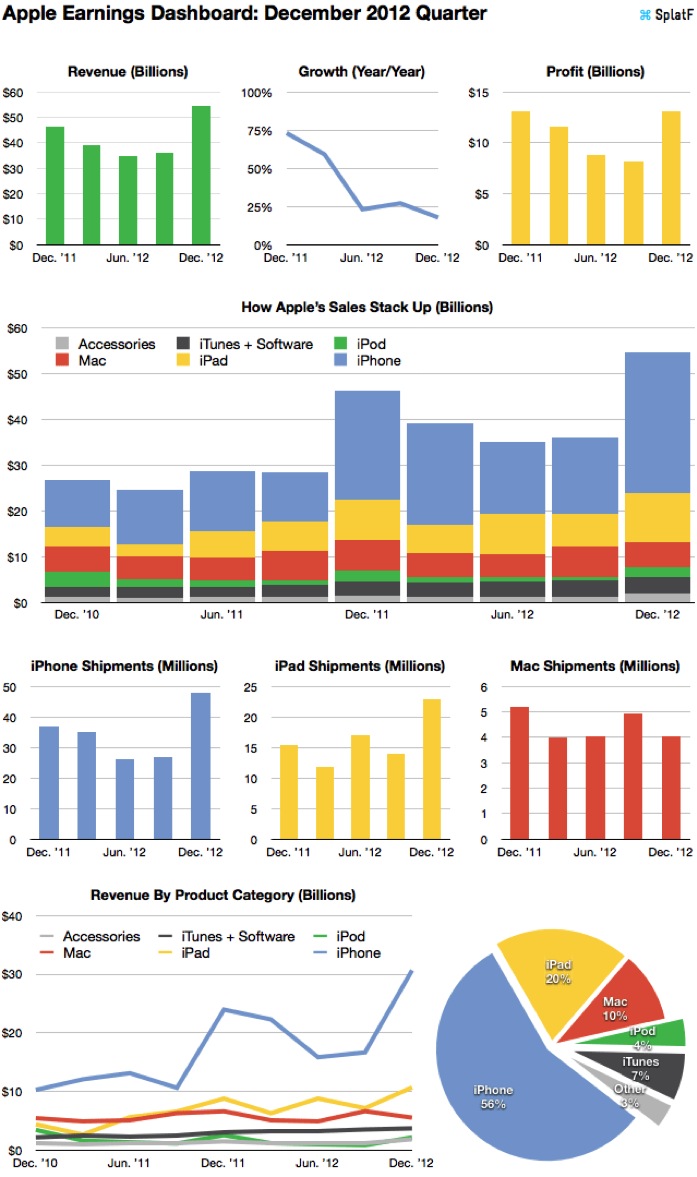
The media would need to work had to find bad news in the figures above and yet this is what a section of them have chosen to do. Apple growth year on year is still at 18%, something any IT firm would love to experience right now. Ask Microsoft, RIM, Nokia, Dell or any other firm about Apple’s figures and they would probably sheepishly admit that these are the type of numbers that they dream of hitting. Add to this the fact that Apple is now holding $137 billion in cash reserves, and you see the strength of their position.
In terms of the future, we see that the iPhone and iPad continue to set record sales numbers and we know that Apple is well placed. They have moved from a Mac and iPod manufacturer through to being centred on their iOS devices and this is a transition which Microsoft is struggling to come to terms with right now. As the iPod ages and Mac numbers may be steady, the push ahead is with the iPad as it becomes the number one home (and possibly business) PC. Not only did Apple ride the success of the iPod, but it then stepped off this success and on through with the iPhone, showing how it evolves as a company, knowing where the market is today but ready to move to where the market is heading.
All of the rumours of the decline in demand for the iPhone 5 came to nothing. The iPhone 5 is the most popular iPhone model to date. Demand for the iPhone 4 is also strong and this is Apple cheaper iPhone model. All of the speculation and rumours about Apple introducing a cheaper handset is nonsense. The figures show that the iPhone 4 IS Apple’s cheaper model and the demand for the iPhone 4 and 5 outstrips supply.
At the end of the day the view of analysts needs to be looked at again. Most financial analysts don’t understand Apple or its business model, and the wild expectations for quarterly revenue and growth needs to be reassessed. In recent years Apple have always exceeded their guidance figures for the quarter but the analysts still punish the company when they do not meet the Wall Street expectations, which ride way above the facts and way above the figures Apple had given. They, on occasion, don’t meet the speculative figures given by Wall Street analysts. Analysts punish Apple for not meeting their Wall-Street-created figures. This takes no account of Apple’s reporting, its own numbers, and the facts at hand.
This may be the reason that Apple has decided to change the way it sets guidance figures. In the past it set figures on what it was sure it would meet. They have now said they will set realistic targets, representing what they believe that will achieve, setting the bar that bit higher, and presumably at times they will fall short. We hope that Wall Street have taken note. Apple future guidance numbers may not be met- they are figures that they hope to achieve, but are not 100% certain that they will hit for that quarter. This will open a new chapter in realism but we doubt as to whether Wall Street will take this on board and treat the company fairly in its reporting and speculation..
Reeder and Readability: Ways to Manage News on OS X and iOS
The way we currently manage this is with a program called Reeder (with a second program called Readability in the background). Reeder gathers together the RSS feeds from each of the websites that we subscribe to.

Here are the steps to set this up for your sites/sources:
1/ set up a Google Reader account (www.google.com/reader). Although you won't be logging into the Google website very often, the Google Reader account forms the backbone of the system that is used for the Reeder application. Once you have set up a Google Reader account you will have set the new login email address and password. Now you are ready to use this in the Reeder application.
2/ the next step is to buy and download the Reeder program from the Mac App Store. It is best to set it up on your Mac first as there will be a little bit of configuration going on and then you can install Reeder on your iOS devices later.
3/ once you download and install Reeder, you need to open it and login to your Google Reader account.
4/ you can add new subscriptions to all of the websites that you wish to use. In Reeder, choose "add subscription" is from the subscriptions menu at the top of the screen.

Once you click on the subscribe button, a green "subscribed" icon should appear, showing you are now connected:

Now you can keep adding all of your sites and they will feed headlines and news summaries to your Reeder app.
4/ when you wish to hold a couple of articles aside to be read later, it is best to send them over to the Readability app. In other words, Reeder is used for all fresh headlines and Readability if for digesting the couple of articles which require more attention later in the day.
First you need to download the Readability up on your iOS device such as your iPad or your iPhone. Readability is not available for the Mac (except through Safari), so we find that we catch up on important articles in Readability on the iPad at the end of the day.
5/ next, you need a Readability account which you can set up the first time you use the app.
6/ now you need to return to the Reeder app, and you need to sign into your Readability account inside the Reeder application. In the Reeder menu, choose Preferences -> Services and enter your details. This now links Reeder to Readability.
7/ when you open Reeder it will download the headlines for each of your sites, pulling in any news since your last use of the app. When you tap on a headline and read it, it will disappear as it has been marked as "read". If you read the headline and think that you would like to read the rest of the content later, tap on the Readability icon to add it to the Readability app.
8/ you can open Readability at any stage and read the articles you have filed there.
Think of Reeder as a fishing net scooping up all of the headlines for you- and then Readability is reserved for the best of the catch..
The Problem with Analysts...
Now all those years later ti would have been a great bet, but it still shows that this would have been nothing to do with any of my skills. It would have been down to two things- Apple’s performance and the whim of the markets.
Which brings us to the latter. In recent months the rumours which have emerged about Apple have swung from the possible (the best you can hope for with a rumour) to the down right ridiculous. Suggestions that Apple absolutely must produce a TV set, have to start selling a cheaper iPhone, need a new Maps and iOS, surely must produce a cheaper Mac, all lead to one conclusion- the majority of analysts know precious little about Apple Inc, its products and its business strategy.
Trading in Apple shares in recent times is a bit like joining a bus load of drunks; it could go well and there could be merit in their behaviour, but the element of unpredictability may lead to disaster. Everyone wants to give directions, everyone thinks thy are right, but you can be sure that fact and considered thought is very, very rare.
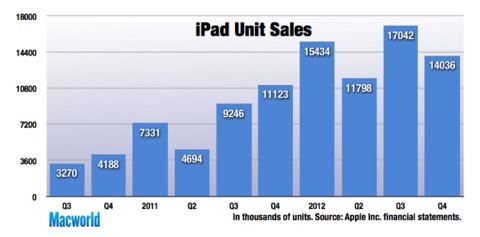
Image courtesy of Macworld
And so we approach Apple’s results tomorrow, which will bring another top set of profits and revenues. But this may not be enough for the financial drunks. They need bigger, better, greater and the slightest slip in figures will bring the headlines of doom and disaster. So as a way to see through the fog, here is what we are likely to get from Apple and why, a simple process for people who know Apple and have followed their financial record over the last decade:
iPods: the iPod figures have been declining for some time now. Why? Because the iPhone is part iPod, part phone, part internet device. This means that the iPod is no longer the must have device. Sales are still good, but not as high as they were in the last decade as people now want iPhones and iPads instead. So expect sales to be good, but they will have declined on last year’s numbers.
iPhone: despite all of the nonsense which has been reported about the iPhone in recent weeks such as Apple halving their orders for displays, the iPhone 5 is set to be Apple most successful iPhone yet. It was the biggest seller in the first few weeks of sales, beating the iPhone 4S’ record numbers, and this is likely to continue. The figures tomorrow will though show some differences. For example, Apple could not produce the iPhone 5 fast enough to satisfy demand and so it took a few weeks at the start of the quarter to get phones into the hands of customers. Therefore the inflated guestimates from some analysts may be too high.
Macs: we feel that while laptops sales will be good, the last revision was in the summer, and the only new laptop since then was the new 13” retina display model launched in October. The new iMac was also announced then, but did not ship until December and is still in short supply. Therefore we see Mac numbers falling behind, not because of lack of interest, but due to the iMac not being on sale during November.
iPads: these numbers should be good and it will be interesting to see what Apple say about the mini. It may be that the iPad 4 did not boost the larger iPad numbers as much as it may have if the iPad mini was not launched at the same time. Many people may have bought minis for Christmas instead as they preferred the form factor. But overall iPad numbers should set a new record for Apple.
Let’s then see what happens. The Apple conference call starts tomorrow night at 5pm EST and is available at this address. Just watch out for those analysts on TV and in the press, armed with their drunken numbers.
